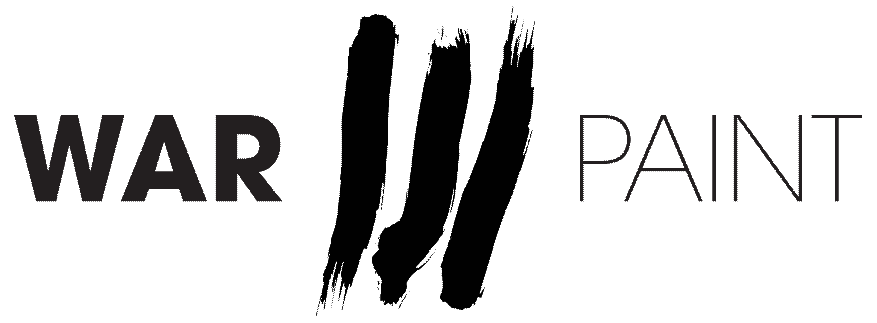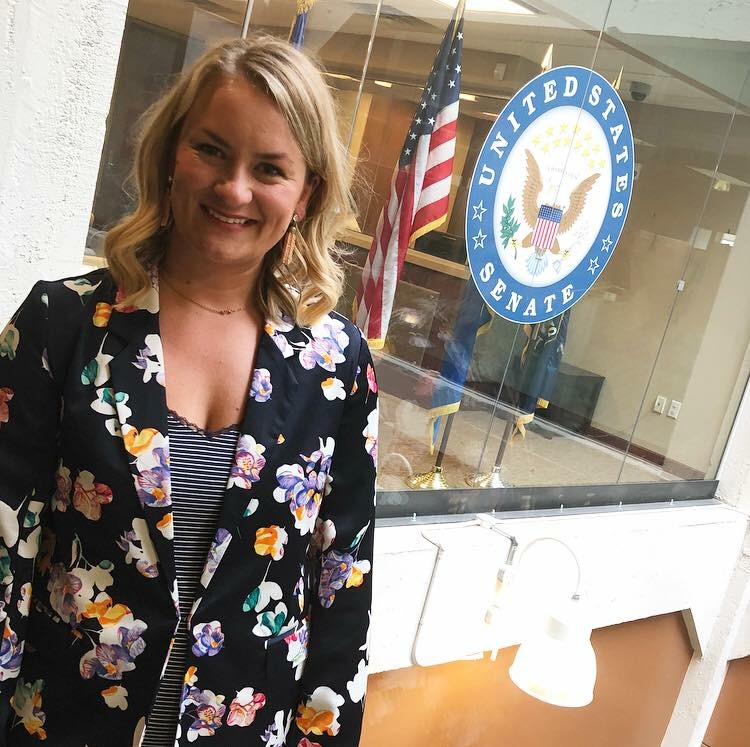A Personal Journey Towards Safe Beauty Products
Jennifer’s story: Beautycounter
When it comes to beauty, you’ve likely heard buzz words like: natural, organic, cleaner, safer, green, and non-toxic. But what does this really mean, and why would someone who has built a career in the health and wellness industry get involved?
As the co-creator of the top-performing class format and Teacher Training program at one of the largest yoga and fitness company’s in the world, I’m grateful to be the Director of Programming and Teacher Training at a Twin Cities-based company where I create class formats and develop accredited teacher training programs and workshops that allow movement enthusiasts to take their teaching and practices to the next level. When I first stepped onto a yoga mat, I instantly connected with the physical and mental benefits of the practice, as well as the extraordinary teachers and students. The Twin Cities yoga community inspired me to leave corporate cube life and dive into a full-time health and wellness gig.
So, you’d think I’m “healthy”, right? Me too.
Childhood symptoms
Since the age of 10 or 11, I’ve suffered from debilitating migraines, which 85% of women suffer from. There was a point in my life where I was in and out of the hospital every other week and wondered how I’d finish high school or go to college. After visiting countless doctors, and mostly due to my personal research, I was able to pinpoint the role hormones played in my sickness - 80% of women suffer from hormonal imbalance.
At my wits end, and at the encouragement of a natural doctor, I started to learn the severe impact the products I slather on my body everyday could be having on my hormones – and my overall health. To put it lightly, I was furious! As human beings, we’re taught to believe that if we workout and eat well, we’re healthy, so when I learned that the last notable law regarding the safety of what I use on my largest organ every single day was passed over 80 years ago and bans a measly 30 ingredients out of the hundreds of thousands on the market, I had to take action. It’s 2019 in the US. This is a common-sense issue like no smoking on airplanes and seatbelts in cars!
Beautycounter. A safer way to beauty
Simply put, I joined a company that’s fighting every single day to regulate those buzz words. Enter Beautycounter - it changed my life. They are advocating for more health-protective laws in the largest consumer industry and that are providing safe, high-performing product options.
Some other organizations tried to blaze the way. Since 2004, there has been a movement called “Campaign for Safe Cosmetics” which has used smarts and sass to pressure the cosmetics industry to make safer products.
The Campaign for Safe Cosmetics coalition, a project of Breast Cancer Prevention Partners (formerly the Breast Cancer Fund), works to protect the health of consumers, workers and the environment through public education and engagement, corporate accountability and sustainability campaigns and legislative advocacy designed to eliminate dangerous chemicals linked to adverse health impacts from cosmetics and personal care products.
The Campaign has educated millions of people about the problem of toxic chemicals in cosmetics, which has led to an increased demand for safer products in the marketplace. Now hundreds of cosmetic companies fully disclose ingredients and avoid the use of cancer-causing chemicals, reproductive toxicants and other unsafe chemicals, demonstrating these practices are not only possible, but profitable. Retailers, too, are becoming part of the solution by requiring the national brands they sell to eliminate chemicals of concern and practice a higher level of ingredient transparency.
It’s progress, but we have a very long way to go in the United States with our journey towards safe beauty products…
Change was imminent
I had no choice. I did my research and changed this one simple aspect of my life to help carve the way for healthier living. My journey to safe beauty products pointed to Beautycounter for a few reasons. I crave connection with passionate, like-minded women, I saw an opportunity to work to pay off my pricey private school degree while making a significant social impact, and because I haven’t been this passionate about anything since becoming a fitness and yoga teacher.
BUT, change also happened because of these daunting and debilitating reasons.
I’ve suffered from unexplained debilitating migraines for almost two decades.
I care about my body and take care of myself by exercising and eating in moderation.
I’ve been lucky enough to make a career in the fitness industry and had NO clue the garbage I was slathering on my body every single day.
My hormones are already crazy enough without using products that could disrupt them even more.
Infertility is way too close to me and could be me (because…I was to control the controllable).
Everyone has someone close to them who died way too young from the C word (big love, sweet Allie).
Our government has not passed a meaningful federal law regulating personal care products since 1938.
The current legislation is less than two pages long and has sizable loopholes.
This legislation bans a measly 30 ingredients (compared to 1500+ in the EU), allowing products that contain potentially harmful toxins onto our counters and into our cabinets.
I can be a voice in this crucial mission.
We ALL deserve better.
When we know better, we do better.
Because Beautycounter was the #1 trending beauty brand of 2018.
To see what chemicals the products that you use every day may contain, try the EWG’s Skin Deep Cosmetic Database.
Jennifer Wieck
Supporting the mission to get safe products in the hands of everyone.
The Never List™
Beautycounter produces “The Never List” on their website. I’ve dropped those items below here so you can see some of the things we allow to be consumed in our daily routines that have long-term health affects for you and your family. The list is about 1500 products deep globally; the United States only bans 30 of them. Many of these product are cancer-causing and we let our skin soak them in every day of our lives. In an un-related article, you may find it interesting that dogs can detect cancer.
Just say no. Support the journey towards safe beauty products.
Benzalkonium Chloride
A disinfectant used as a preservative and surfactant associated with severe skin, eye, and respiratory irritation and allergies. Found in: sunscreens, moisturizers.
Butylatedhydroxy Anisole and Butylated Hydroxytoluene
Synthetic antioxidants used to extend shelf life. They are likely carcinogens and hormone disruptors and may cause liver damage. Found in: lipsticks, moisturizers, diaper creams, and other cosmetics.
Coal tar hair dyes and other coal tar ingredients
A byproduct of coal processing that is a known carcinogen. It is used as a colorant and an anti-dandruff agent. Found in: hair dye, shampoo.
Ethylenediaminetetraacetic acid (EDTA)
A chelating (binding) agent added to cosmetics to improve stability. May be toxic to organs. Found in: hair color, moisturizers.
Ethanolamines (MEA/DEA/TEA)
Surfactants and pH adjuster linked to allergies, skin toxicity, hormone disruption, and inhibited fetal brain development. Found in: hair dyes, mascara, foundation, fragrances, sunscreens, dry cleaning solvents, paint, pharmaceuticals.
Formaldehyde
Used as a preservative in cosmetics. A known carcinogen that is also linked to asthma, neurotoxicity, and developmental toxicity. Present where quaternium-15, DMDM hydantoin, imidazolidinyl urea, diazolidinyl urea, sodium hydroxymethylglycinate, 2-bromo-2-nitropropane-1,3 diol (Bronopol), and several other preservatives are listed. Found in: shampoo, body wash, bubble bath.
Hydroquinone
A skin-lightening chemical that inhibits the production of melanin and is linked to cancer, organ toxicity, and skin irritation. Found in: skin-lightening creams.
Methylisothiazolinone and methylchloroisothiazolinone
Chemical preservatives that are among the most common irritants, sensitizers, and causes of contact skin allergies. Found in: shampoo, conditioner, body wash.
Oxybenzone
Sunscreen agent and ultraviolet light absorber linked to irritation, sensitization and allergies, and possible hormone disruption. Found in: sunscreen, moisturizer.
Parabens (methyl-, isobutyl-, propyl- and others)
A class of preservatives commonly used to prevent the growth of bacteria and mold. Parabens are endocrine (or hormone) disruptors, which may alter important hormone mechanisms in our bodies. Found in: shampoo, face cleanser, body wash, body lotion, foundation.
Phthalates (DBP, DEHP, DEP and others)
A class of plasticizing chemicals used to make products more pliable or to make fragrances stick to skin. Phthalates disrupt the endocrine system and may cause birth defects. Found in: synthetic fragrance, nail polish, hairspray, and plastic materials.
Polyethylene glycol (PEG compounds)
PEGs are widely used in cosmetics as thickeners, solvents, softeners, and moisture-carriers. Depending on manufacturing processes, PEGs may be contaminated with measurable amounts of ethylene oxide and 1,4-dioxane, which are both carcinogens. Found in: creams, sunscreen, shampoo.
Retinyl palmitate and Retinol (Vitamin A)
A nutrient that may damage DNA and speed the growth of skin tumors when used topically. Found in: moisturizer, anti-aging skincare.
Sodium Lauryl Sulfate and Sodium Laureth Sulfate (SLS and SLES)
SLS and SLES are surfactants that can cause skin irritation or trigger allergies. SLES is often contaminated with 1,4-dioxane, a byproduct of a petrochemical process called ethoxylation, which is used to process other chemicals in order to make them less harsh. Found in: shampoo, body wash, bubble bath.
Synthetic flavor or fragrance
An engineered scent or flavoring agent that may contain any combination of 3,000-plus stock chemical ingredients, including hormone disruptors and allergens. Fragrance formulas are protected under federal law’s classification of trade secrets and therefore can remain undisclosed. Found in: all types of cosmetics.
Toluene
A volatile petrochemical solvent that is toxic to the immune system and can cause birth defects. Found in: nail polish.
Triclosan and Triclocarban
Antimicrobial pesticides toxic to the aquatic environment; may also impact human reproductive systems. Found in: liquid soap, soap bars, toothpaste.




